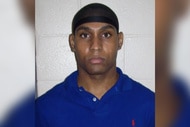Create a free profile to get unlimited access to exclusive videos, breaking news, sweepstakes, and more!
What Does 'Making A Murderer Part 2' Tell Us About Gender In True Crime?
Here's what a feminist scholar and a female lawyer have to say about Kathleen Zellner and the ways women navigate the justice system.
Women seem to love true crime — but there's no denying that much of the true crime stories we devour primarily feature women as the victims, whether it's a girl getting burned alive like Jessica Chambers or a student going missing while abroad like Natalee Holloway.
So what role does gender truly play in true crime media? The introduction of Kathleen Zellner, Steven Avery's new lawyer, as a disruptive force to the narrative of Netflix true crime sensation "Making a Murderer" raises bigger questions about the feminist qualities of the show, and of feminism in court rooms in general. In a genre where women are often portrayed as victims, does Zellner represent a paradigm shift?
Netflix's "Making A Murderer" (alongside HBO's "The Jinx" and the "Serial" podcast) helped catalyze a true crime renaissance. Sparking a newfound public interest in the sometimes-dysfunctional machinations of our criminal justice system, the program galvanized activists seeking justice for Steven Avery and Brendan Dassey, the main characters of the docu-series, which heavily implied that the pair were both innocent despite their convictions. With the return of "Making A Murderer" shifting focus from Avery himself onto Zellner's quest to prove his innocence, the stark picture of relations between men and women in crime somehow shift into focus.
Juniper Alcorn, PhD, a philosopher who studies gender and new technologies, noted the show's positive depictions of professional women.
“The thrust of the show at first appears to be about two men [Steven Avery and Brendan Dassey]. But in the second season they're not really the protagonists. The female lawyer is," Alcorn told Oxygen.com. "So we've got this strong female lead running the show through the whole thing, which is not necessarily obvious in the way the show is structured or marketed. We've also got the more do-gooder, younger lawyer [Laura Nirider]. So there are two strong, female characters — which makes the show great to watch. The two women represent different types of practicing the law and different types of moral and ethical approaches to the law. They're not on the same team exactly — they have their own narratives, they're doing their own thing.”
It is particularly ironic that women were so sparse in the first season of the show considering the program was essentially organized around the murder of Teresa Halbach. Indeed, Halbach appears only as a sort of ghost in the series who must exist through the (often violent) memories of other people — usually men. Halbach's role is as the ur-victim in the series, always to be associated with pity and sadness.
“Teresa Halbach is so ultimately voiceless," commented Alcorn. "This woman has nothing; she has no identity. She just becomes a figure for victimized womanhood and that is the reason we should hate criminals and we should want to see criminals not only punished but punished for life until they die. She's not a character as much as she's a recurring chorus of moral panic. It sounds so dishonest whenever anyone brings her up because she's so not what the show is about anymore.”
And although Zellner has become the sort of figurehead for the new season, it is Dassey's lawyer who appeals to more stereotypically feminine logic, one of empathy and concern, as her strategy for defeating the more patriarchal system of the courts.
"Nirider was specifically there as an advocate for children's rights, as opposed to Zellner, who is very clearly a shrewd businesswoman picking up on an opportunity following through on a career that has led up to this," said Alcorn. "But Nirider is making an argument to protect the children. The people who were most on her side were the female judges, who were also there to protect children and have a sense that disability is a real thing." (Dassey was a teenager with a low IQ when indicted.)
Meanwhile, the men who surrounded Halbach's life and death continue to be characterized primarily by their violent actions taken against women, ranging from the horrifying accusation of murder made against Brendan and Steven, to the suspicious search history of Bobby Dassey (which allegedly contained searches for violent porn), to the elaborate alleged cover-up perpetrated by police, to season one's ostensible antagonist Ken Kratz's allegedly predatory behavior toward a victim of domestic abuse whose ex-boyfriend he was prosecuting.
At the time of the second season's debut, we know that both Zellner and Nirider have not succeeded in freeing their clients from what they describe as the injustices of the system itself. And while nowhere in the show is it mentioned, is it possible that the gender of these lawyers is partly to blame for their lack of success in these instances?
A female personal injury litigation attorney with six years of experience who practices in New York that we spoke with — who prefers not to be named — bemoaned the ways that women in the legal profession continue to be distrusted and disrespected as compared to their male peers.
"I feel like people put less trust in what [female lawyers] say, especially male judges. I do feel female judges are more willing to listen to female attorneys than male judges. Sometimes age is a factor. Older male judges are very used to seeing a very specific type of person as a lawyer, usually another older white man. So they have it in their heads: This is what it's supposed to look like. It's not just judges though, it's clients, other male attorneys. [Female lawyers] are just not taken seriously the same way male attorneys are."
Additionally, this attorney was not surprised by the ways in ways in which Zellner had to repeatedly go over blatant mistakes from Avery's previous defense lawyers, nor was she surprised by the corruption that the prosecutors have been accused of.
"The way men practice law: They're rarely as competent as the female attorneys," she said frankly. "The female attorneys tend to work harder. They have to, I guess. Men just have a kind of arrogance, so they feel entitled to look things over in cases, not include as much detail, or just screw things up — and then women come in and fix it. Because what [men] say holds more weight in the legal system. A woman could say the same thing but it has more weight coming from a male attorney."
"There definitely is a culture of corruption amongst the men in law," she continued. "You just hear stories about people getting disbarred or sanctioned and it's usually men. Sometimes I really do think it's just a certain arrogance they have: They think they can get away with more. And they can! Me and other female attorneys talk about it all the time... they can get away with more mistakes. Women have to strive for a certain perfectionism in this profession."
Of course, the primary focus of "Making a Murderer," at least explicitly, has little to do with gender relations, nor does most true crime media. And yet, the audience for true crime has more recently been predominantly female — leading many to ponder the specific appeal of the genre for women. For Alcorn, the genre of true crime contains within it a specific fantasy about gender not reflected in reality.
"[In true crime], no one questions the facts of the crimes themselves," Alcorn observed. "It's not questioned! It's a crime that happened and it got prosecuted: There's a fantasy of the crime being taken seriously and being followed up on in a significant and actual way. Because if you think about how many people experience sexual assault and rape in their lives versus how often that gets reported and prosecuted — of course there's a fantasy. To see that actually happen! At no point do we get into victim blaming. The victims are real victims. They are respected and remembered and it's never their fault."
"And obviously it's terrifying," Alcorn concluded.
[Photo: Kathleen Zellner by Monica Schipper / Getty Images]





























